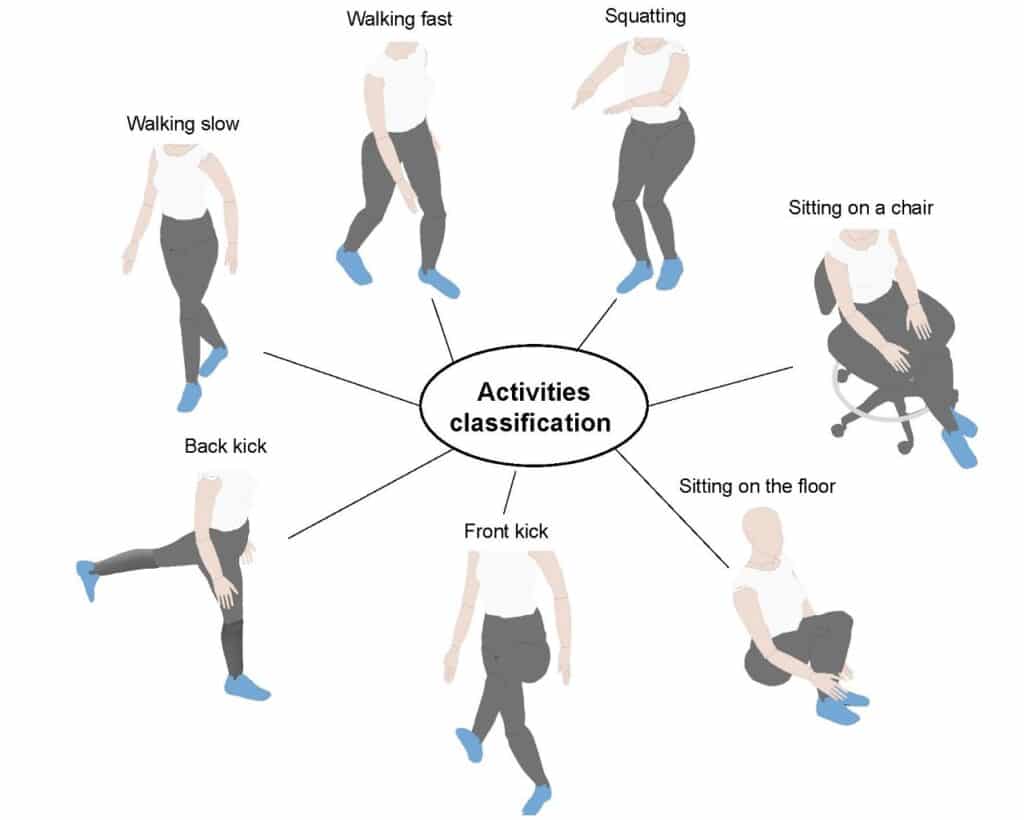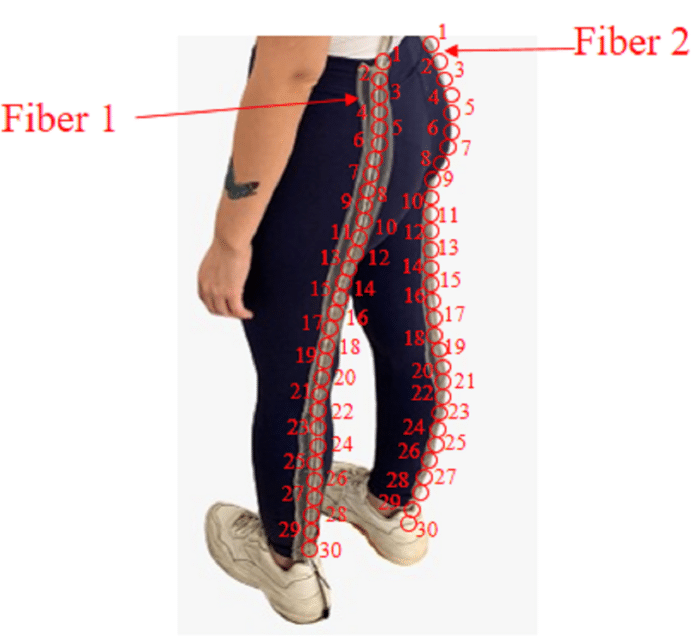The world’s aging population has created a demand for new sensor technologies to assist clinicians and carers in remotely monitoring a person’s health. New fiber optic sensor-based smart pants could aid by providing a nonintrusive approach to track a person’s activities and provide notifications if there are symptoms of trouble.
Research team leader Arnaldo Leal-Junior from the Federal University of Espirito Santo in Brazil, said, “Our polymer optical fiber smart pants can be used to detect activities such as sitting, squatting, walking or kicking without inhibiting natural movements; this approach avoids the privacy issues that come with image-based systems and could be useful for monitoring aging patients at home or measuring parameters such as range of motion in rehabilitation clinics.”
The researchers disclose the novel smart trousers, which include transparent optical fibers directly integrated into the material, in the Optica Publishing Group journal Biomedical Optics Express. They also created a compact signal acquisition equipment that fits inside a trouser pocket.
Leal-Junior, said, “This research shows that it is possible to develop low-cost wearable sensing systems using optical devices; we also demonstrate that new machine learning algorithms can be used to extend the sensing capabilities of smart textiles and possibly enable the measurement of new parameters.”
The study is part of a broader project to create photonic fabrics for low-cost wearable sensors. Although devices such as smartwatches can detect movement, the researchers aimed to create a technique that could identify specific types of activity without interfering with movement in any manner. They accomplished this by embedding intensity variation polymers optical fiber sensors directly into the fabric, which was then utilized to make trousers.
The sensors were built around 1 mm polymethyl methacrylate optical fibers. By removing small pieces of the outer cladding fiber core, the researchers generated sensitive zones in the fibers. When the fiber bends due to movement, the optical power traveling through the fiber changes, and this can be utilized to determine what type of physical alteration was performed to the sensitive part of the fiber.
Researchers from the Brazil’s Federal University of Espirito Santo created polymer optical fiber smart trousers that detect motions like sitting, squatting, walking, or kicking without interfering with natural movements. This method eliminates the privacy concerns associated with image-based systems. It could be beneficial for monitoring elderly patients at home or evaluating metrics such as range of motion in rehabilitation clinics.
The researchers describe the new smart pants, which have transparent optical fibers directly integrated into the fabric, and a portable signal acquisition device that can be placed within the trousers pocket.
This study demonstrates that low-cost wearable sensing systems may be developed using optical devices, as well as how new machine learning methods can be utilized to improve the sensing capabilities of smart textiles and potentially enable the measurement of additional parameters.

The scientists inserted intensity variation polymer optical fiber sensors directly into the fabric, subsequently used to make trousers. They were removing small portions of the outer cladding fiber core generating sensitive zones in the fibers. When the fiber bends due to movement, the optical power traveling through the fiber changes, and this can be utilized to determine what type of physical alteration was performed to the sensitive part of the fiber.
The researchers constructed a multiplexed sensor system with 30 measurement points on each leg by establishing these sensitive fiber regions in various locations. They also created a novel machine-learning system based on sensor data to distinguish activities and gait metrics.
The researchers tested their prototype by having volunteers wear smart trousers and do particular tasks. They achieved 100% accuracy in classifying these tasks. Because of their size and flexibility, fiber optic sensors have several advantages, including being immune to electric or magnetic interference and easily integrating into various garment accessories. The researchers are now trying to connect the signal acquisition unit to the cloud so that the data can be accessed remotely, and they intend to test the smart textile in the near future.
This work was done in the LabSensors/LabTel framework, funded by the Brazilian organizations FINEP and CNPq.
Journal Reference:
- Leticia Avellar, Anselmo Frizera, etal.POF Smart Pants: a fully portable optical fiber-integrated smart textile for remote monitoring of lower limb biomechanics.Biomedical Optics Express.DOI: 10.1364/BOE.492796
